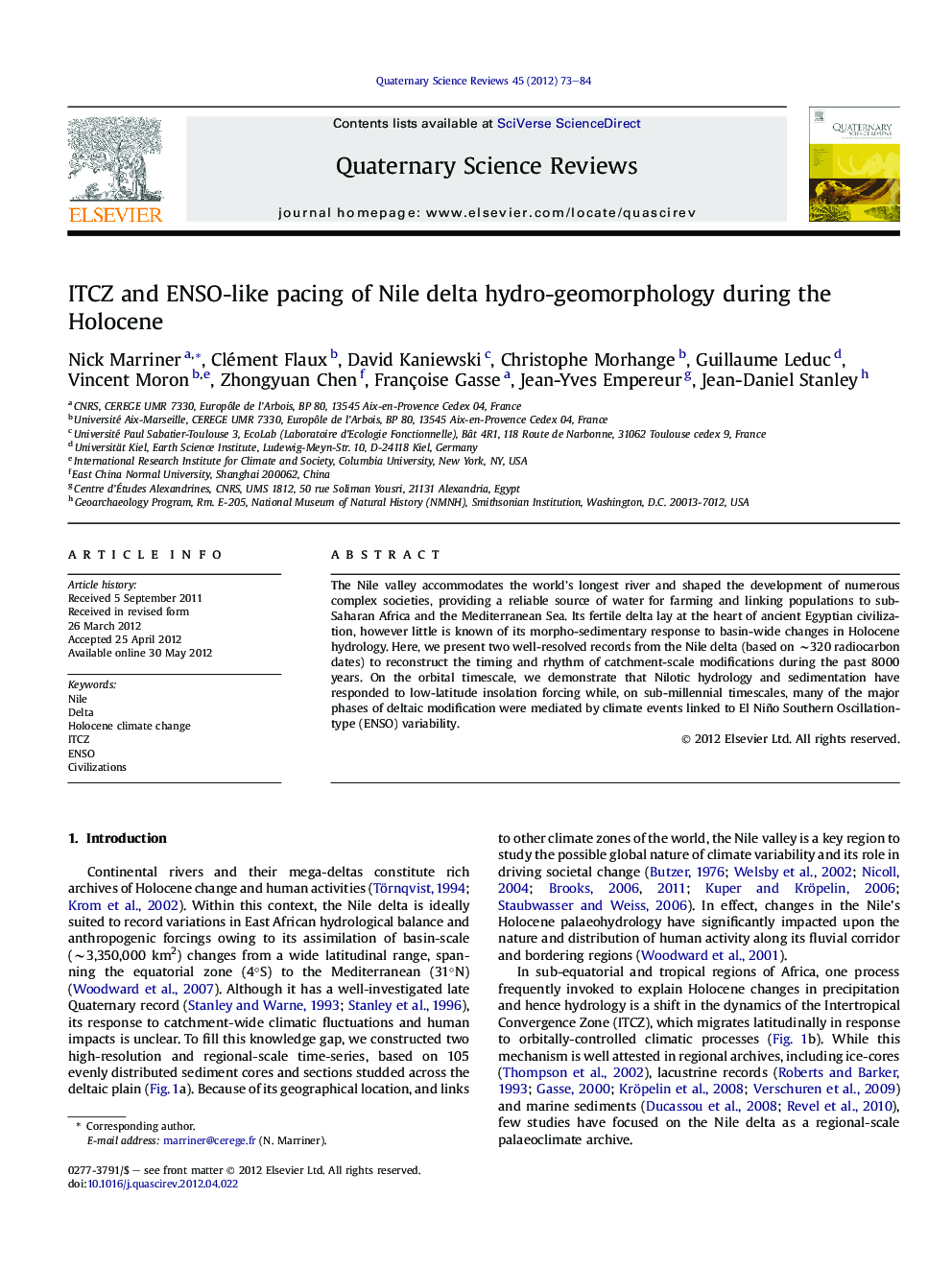| کد مقاله | کد نشریه | سال انتشار | مقاله انگلیسی | نسخه تمام متن |
|---|---|---|---|---|
| 4735776 | 1640889 | 2012 | 12 صفحه PDF | دانلود رایگان |

The Nile valley accommodates the world's longest river and shaped the development of numerous complex societies, providing a reliable source of water for farming and linking populations to sub-Saharan Africa and the Mediterranean Sea. Its fertile delta lay at the heart of ancient Egyptian civilization, however little is known of its morpho-sedimentary response to basin-wide changes in Holocene hydrology. Here, we present two well-resolved records from the Nile delta (based on ∼320 radiocarbon dates) to reconstruct the timing and rhythm of catchment-scale modifications during the past 8000 years. On the orbital timescale, we demonstrate that Nilotic hydrology and sedimentation have responded to low-latitude insolation forcing while, on sub-millennial timescales, many of the major phases of deltaic modification were mediated by climate events linked to El Niño Southern Oscillation-type (ENSO) variability.
► Timing and rhythm of Nile modifications reconstructed for the past 8000 years.
► Nilotic hydrology and sedimentation have responded to low-latitude insolation forcing.
► On sub-millennial timescales, deltaic modification was mediated by ENSO variability.
► Deltas are key archives to understand the interplay between climate forcings and human occupation.
Journal: Quaternary Science Reviews - Volume 45, 29 June 2012, Pages 73–84